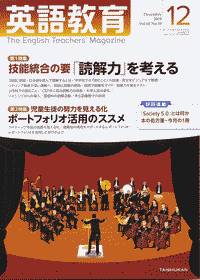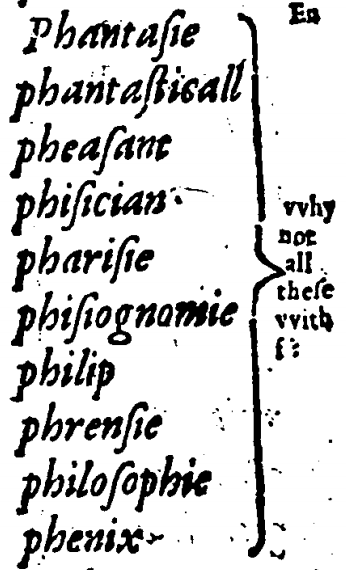2020-02-05 Wed
■ #3936. h-dropping 批判とギリシア借用語 [greek][loan_word][renaissance][inkhorn_term][emode][lexicology][h][etymological_respelling][spelling][orthography][standardisation][prescriptivism][sociolinguistics][cockney][stigma]
Cockney 発音として知られる h-dropping を巡る問題には,深い歴史的背景がある.音変化,発音と綴字の関係,語彙借用,社会的評価など様々な観点から考察する必要があり,英語史研究において最も込み入った問題の1つといってよい.本ブログでも h の各記事で扱ってきたが,とりわけ「#1292. 中英語から近代英語にかけての h の位置づけ」 ([2012-11-09-1]),「#1675. 中英語から近代英語にかけての h の位置づけ (2)」 ([2013-11-27-1]),「#1899. 中英語から近代英語にかけての h の位置づけ (3)」 ([2014-07-09-1]),「#1677. 語頭の <h> の歴史についての諸説」 ([2013-11-29-1]) を参照されたい.
h-dropping への非難 (stigmatisation) が高まったのは17世紀以降,特に規範主義時代である18世紀のことである.綴字の標準化によって語源的な <h> が固定化し,発音においても対応する /h/ が実現されるべきであるという規範が広められた.h は,標準的な綴字や語源の知識(=教養)の有無を測る,社会言語学的なリトマス試験紙としての機能を獲得したのである.
Minkova によれば,この時代に先立つルネサンス期に,明確に発音される h を含むギリシア語からの借用語が大量に流入してきたことも,h-dropping と無教養の連結を強めることに貢献しただろうという.「#114. 初期近代英語の借用語の起源と割合」 ([2009-08-19-1]),「#516. 直接のギリシア語借用は15世紀から」 ([2010-09-25-1]) でみたように,確かに15--17世紀にはギリシア語の学術用語が多く英語に流入した.これらの語彙は高い教養と強く結びついており,その綴字や発音に h が含まれているかどうかを知っていることは,その人の教養を示すバロメーターともなり得ただろう.ギリシア借用語の存在は,17世紀以降の h-dropping 批判のお膳立てをしたというわけだ.広い英語史的視野に裏付けられた,洞察に富む指摘だと思う.Minkova (107) を引用する.
Orthographic standardisation, especially through printing after the end of the 1470s, was an important factor shaping the later fate of ME /h-/. Until the beginning of the sixteenth century there was no evidence of association between h-dropping and social and educational status, but the attitudes began to shift in the seventeenth century, and by the eighteenth century [h-]-lessness was stigmatised in both native and borrowed words. . . . In spelling, most of the borrowed words kept initial <h->; the expanding community of literate speakers must have considered spelling authoritative enough for the reinstatement of an initial [h-] in words with an etymological and orthographic <h->. New Greek loanwords in <h->, unassimilated when passing through Renaissance Latin, flooded the language; learned words in hept(a)-, hemato-, hemi-, hex(a)-, hagio-, hypo-, hydro-, hyper-, hetero-, hysto- and words like helix, harmony, halo kept the initial aspirate in pronunciation, increasing the pool of lexical items for which h-dropping would be associated with lack of education. The combined and mutually reinforcing pressure from orthography and negative social attitudes towards h-dropping worked against the codification of h-less forms. By the end of the eighteenth century, only a set of frequently used Romance loans in which the <h-> spelling was preserved were considered legitimate without initial [h-].
・ Minkova, Donka. A Historical Phonology of English. Edinburgh: Edinburgh UP, 2014.
2020-01-13 Mon
■ #3913. (偽の)語源的綴字を肯定的に評価する (2) [etymological_respelling][renaissance]
昨日の記事 ([2020-01-12-1]) に引き続き,(偽の)語源的綴字を肯定的に評価する視点について.一昨日の記事「#3911. 言語体系は,本来非同期的な複数の時のかたちが一瞬出会った断面である」 ([2020-01-11-1]) で引用している中谷は,そもそもの論考では,明治初期に流行して20年程度で衰退した西洋様式風の建築,一般に「擬洋風」と称される建築(「築地ホテル」がその嚆矢)について,クブラーを援用しながら評価していたのだった.その視点を,英語史上の(偽の)語源的綴字の問題に対して応用してみたらおもしろそうだと思い,昨日の記事で試してみた次第である.
そこで改めて中谷 (91) に戻ると,「擬洋風」を日本建築史のなかに肯定的に位置づけようと力説している箇所があり,はっとさせられた.そのまま(偽の)語源的綴字の評価にもつながるではないか.
むしろ擬洋風という言葉には,何か魅惑的な野蛮さがある.様式は忠実に典型を模倣するのみならず,さまざまな意匠様式を主体的に選択しこれまでになかったような雰囲気を作り出すことが可能である.少なくとも優れた折衷主義建築を輩出した一九世紀ヨーロッパにおいては,そのような信念が存在していた.むしろ擬洋風の「擬」とは,じつはこの様式の模倣に潜在する可能性をこそ的確に表現していた,とさえいえる.
当時の擬洋風建築をかたちづくった大工棟梁達に要請されていたのは,何か,時代が「開いた」ことを建築として示そうとする感覚である.開化のかたちは,まだいずこに行くとも知れない流動する当時の世界のなかで,利用できそうなさまざまな様式的断片をつなぎあわせ,手探りで組みたてられはじめた.以上のような意味で擬洋風建築は様式的な可能性・自由の領域,クブラーのいう開かれたシークエンスに接続しているのである.
(偽の)語源的綴字が表わしているものは,ラテン語かぶれの俗物根性などではなく,可能性の追求であり自由の謳歌なのだ.この発想は,それこそルネサンスらしく前向きで,底抜けに明るい.
・ 中谷 礼仁 「一九世紀擬洋風建築とG・クブラーの系統年代について」『文化系統学への招待』中尾 央・三中 信宏(編),勁草書房,2012年.85--117頁.
2020-01-12 Sun
■ #3912. (偽の)語源的綴字を肯定的に評価する (1) [etymological_respelling][silent_letter][hypercorrection][renaissance]
doubt の <b> のような語源的綴字 (etymological_respelling) は,一般的には現代英語の抱えている「発音と綴字の乖離」問題の元凶として否定的にみられることが多い.古典を重視する16世紀の英国ルネサンスの潮流のなかで,ラテン語の語源形に存在した <b> の子音字を,崩れた英語の綴字のなかに戻してやることによって,英(単)語にラテン語風味と威信を付加したいという俗物的な時代精神の産物として説明されることが多い.そのような俗物根性ゆえに,後代の英語学習者は理不尽な黙字 (silent_letter) に付き合わされることになったしまったのだと.
さらに,island における <s> の挿入のように,ラテン語の語源形が正しく参照されず,俗物根性だけが発揮されてしまった,偽の語源的綴字 (pseudo-etymological spelling) ,あるいは「非語源的綴字」 (unetymological spelling) の例も少なくない (cf. 「#580. island --- なぜこの綴字と発音か」 ([2010-11-28-1])).これなど,ミーハー精神丸出しの恥ずかしい過剰修正 (hypercorrection) の事例とみる向きが多い.
しかし,昨日の記事「#3911. 言語体系は,本来非同期的な複数の時のかたちが一瞬出会った断面である」 ([2020-01-11-1]) で取り上げたクブラーの思想にしたがえば,(偽の)語源的綴字という現象は,初期近代当時の「文化形成の重要なモーメント」として肯定的に評価することもできる.結果として発音と綴字の乖離が生じたことは否定できないが,それ以上にこの現象は当時の生き生きとした言語活動の証として,「開かれたクラスすなわちシークエンス」を推し進める営みとしてみることができる.当時の英語が抱えていた威信の欠如という「問題」に対して,ラテン語にあやかるという「解答」が出されることによって,新たなシークエンスが生み出されたのだと.
そのシークエンスを始めたプライム・オブジェクトの1つが,たとえば doubt の <b> のような著名な例だった可能性がある.この辺りから開始された一連の流れは,やがて偽の語源的綴字を生み出すまでに至ったが,これも現象の劣化とみる必要はなく,自律的な突然変異として,自然なシークエンスの一部として解釈することができる.改めて中谷 (89) より引用すれば,「プライム・オブジェクトからはじまる模倣は,完全なコピーではなく,むしろ時がたつにつれて,完全を期そうとも,伝言ゲームのように不可避的に変形し,時の流れ自体が自律的に突然変異 (mutant) をも生み出すのだ」.
island の <s> などを指して「偽の語源的綴字」というときのネガティブな修飾語「偽の」は,クブラーの見方によれば,むしろ模倣に潜在する開かれた可能性や,自由で主体的な創造性としてポジティブに評価され得るものなのだ.発想の転換を促すすぐれた視点だと思う.
・ 中谷 礼仁 「一九世紀擬洋風建築とG・クブラーの系統年代について」『文化系統学への招待』中尾 央・三中 信宏(編),勁草書房,2012年.85--117頁.
2019-11-18 Mon
■ #3857. 『英語教育』の連載第9回「なぜ英語のスペリングには黙字が多いのか」 [rensai][notice][silent_letter][consonant][spelling][spelling_pronunciation_gap][sound_change][phonetics][etymological_respelling][latin][standardisation][sobokunagimon][link]
11月14日に,『英語教育』(大修館書店)の12月号が発売されました.英語史連載「英語指導の引き出しを増やす 英語史のツボ」の第9回となる今回の話題は「なぜ英語のスペリングには黙字が多いのか」です.

黙字 (silent_letter) というのは,climb, night, doubt, listen, psychology, autumn などのように,スペリング上は書かれているのに,対応する発音がないものをいいます.英単語のスペリングをくまなく探すと,実に a から z までのすべての文字について黙字として用いられている例が挙げられるともいわれ,英語学習者にとっては実に身近な問題なのです.
今回の記事では,黙字というものが最初から存在したわけではなく,あくまで歴史のなかで生じてきた現象であること,しかも個々の黙字の事例は異なる時代に異なる要因で生じてきたものであることを易しく紹介しました.
連載記事を読んで黙字の歴史的背景の概観をつかんでおくと,本ブログで書いてきた次のような話題を,英語史のなかに正確に位置づけながら理解することができるはずです.
・ 「#2518. 子音字の黙字」 ([2016-03-19-1])
・ 「#1290. 黙字と黙字をもたらした音韻消失等の一覧」 ([2012-11-07-1])
・ 「#34. thumb の綴りと発音」 ([2009-06-01-1])
・ 「#724. thumb の綴りと発音 (2)」 ([2011-04-21-1])
・ 「#1902. 綴字の標準化における時間上,空間上の皮肉」 ([2014-07-12-1])
・ 「#1195. <gh> = /f/ の対応」 ([2012-08-04-1])
・ 「#2590. <gh> を含む単語についての統計」 ([2016-05-30-1])
・ 「#3333. なぜ doubt の綴字には発音しない b があるのか?」 ([2018-06-12-1])
・ 「#116. 語源かぶれの綴り字 --- etymological respelling」 ([2009-08-21-1])
・ 「#1187. etymological respelling の具体例」 ([2012-07-27-1])
・ 「#579. aisle --- なぜこの綴字と発音か」 ([2010-11-27-1])
・ 「#580. island --- なぜこの綴字と発音か」 ([2010-11-28-1])
・ 「#1156. admiral の <d>」 ([2012-06-26-1])
・ 「#3492. address の <dd> について (1)」 ([2018-11-18-1])
・ 「#3493. address の <dd> について (2)」 ([2018-11-19-1])
・ 堀田 隆一 「なぜ英語のスペリングには黙字が多いのか」『英語教育』2019年12月号,大修館書店,2019年11月14日.62--63頁.
2018-11-19 Mon
■ #3493. address の <dd> について (2) [etymological_respelling][latin][prefix][spelling]
昨日の記事 ([2018-11-18-1]) に引き続いての話題.ラテン語の接頭辞 ad- は,続く語根の頭音に応じて ac-, af-, ag-, al-, ap-, as-, at- などと姿を変える.対応する音声の同化 (assimilation) ゆえの異形態 (allomorph) である.例として,accuse, affirm, aggression, allude, appeal, assemble, attend などが挙げられる.逆にいえば,語根の頭音との関係で音便が生じない場合に,基底形の ad- が用いられるということだ.address にせよ,上記の単語群にせよ,接頭辞の子音字が重なって綴られている.おそらくこれらのほとんどが語源的綴字 (etymological_respelling) なのではないかと睨んでいる.つまり,古フランス語や中英語では問題の子音字はおよそ1つだけで綴られていたが,初期近代英語期にかけて,語源であるラテン語形を参照して子音字をダブらせたのではないかと.
この点について,Barnhart が断言的な記述を与えている.まずは,ズバリ address について.
The present spelling with -dd- is a refashioning of the prefix a- into ad- in English, after the Latin form, and occasionally occurs in Middle French.
そして,より一般的な解説が ad- の見出しのもとに与えられている.
Words formed with ad- found in modern English do not always reflect a direct passage from Latin into English. The prefix ad- was transformed to a- in Old French, and so appeared in words that entered Middle English through Old French. In the 15th century many of these words were respelled with the ad- to restore the connection with Latin. . . . When the process went too far, as in advance, English acquired a d that had no historical justification.
・ Barnhart, Robert K. and Sol Steimetz, eds. The Barnhart Dictionary of Etymology. Bronxville, NY: The H. W. Wilson, 1988.
2018-11-18 Sun
■ #3492. address の <dd> について (1) [etymological_respelling][latin][prefix][spelling][sobokunagimon]
なぜ address では <dd> と重子音字が用いられているのかというナゾについての回答が,数日前のYahoo!知恵袋でバズっていた(住所という英単語adressとaddressどちらが正しいスペルでしょうか?).真の答えは,大名氏のツイートに端的に示されている通りだろう.初期近代英語期にバズった語源的綴字 (etymological_respelling) である.
この発問の問題意識はわかる.フランス語や中英語では adresser, adressen などと <d> は1つであり,それでも良さそうなのに,現代英語ではなぜ <d> を重ねるのか.さらに語源的には同じラテン語の接頭辞 ad- を付したものでも,adapt, admire, adnominal, adopt, adverb などでは <d> が重なっていないという事情もある.
Upward and Davidson (101) に,ラテン語の接頭辞 ad- の付加と関連して次の記述がみられる.
・ Lat AD- attached to a stem beginning with D results in Lat and ModE -DD-: add (< Lat addere), addiction, address, adduce. (OFr and ME often wrote such words with single D.)
・ D has been doubled in developments from Fr where there has been a stress shift to the first syllable in ModE: boudin > podyng > pudding, sodein > sodayn > sudden.
・ Some words with single medial D (e.g. hideous, medal, model, study) were occasionally written with DD in EModE.
2点目と3点目の記述からわかることは,強勢位置に応じて,現代的な「綴字規則」どおりに子音字を重ねたり重ねなかったりする例が近代英語期に見られたということだ.一方,目下の話題に直接触れている1点目では,中英語や古フランス語では強勢位置の考慮がなされていたようだが,近代英語以降にはなされておらず,むしろラテン語の綴字に引きずられた結果であることが示されている.結果として成立した address, addict, adduce などの綴字は,強勢位置や母音の長さなどを反映する表音的な綴字というよりは,ad- までが接頭辞であり,それ以降の部分が語根であることを示す表形態素的な綴字というべきだろう.そして,それは語源的な綴字でもあった.
英語史の教科書などでは,接頭辞 ad- を参照して d を復元した語源的綴字の典型例として admonish, advance, advantage, adventure, advise などがしばしば挙げられる(最後の語については「#1153. 名詞 advice,動詞 advise」 ([2012-06-23-1]) を参照).しかし,語根がすでに d で始まる今回のような語において,接頭辞にまで d を復元し,結果として <dd> となる事例にはこれまで気づかなかった.むしろ,これこそラテン語の模倣欲が炸裂した語源的綴字の好例ということができるかもしれない.とまれ,一般的に ad- 語において語源的綴字として d が挿入された事例は,これまで私が思っていたよりもかなり多いようである.
・ Upward, Christopher and George Davidson. The History of English Spelling. Malden, MA: Wiley-Blackwell, 2011.
2018-10-30 Tue
■ #3473. 慶友会講演 (2) --- 「英語のスペリングの不思議」 [keiyukai][spelling][spelling_pronunciation_gap][etymological_respelling][hel_education][slide]
昨日の記事「#3472. 慶友会講演 (1) --- 「歴史上の大事件と英語」」 ([2018-10-29-1]) に続き,10月28日に大阪慶友会で行なった講演「英語のスペリングの不思議」のスライドをアップしておきます.
1. 「英語のスペリングの不思議」
2. はじめに
3. 以下の単語のスペリングの何が「不規則」?
4. 取り上げる話題
5. I. 515通りの through --- 中英語のスペリング
6. 「515通りの through」の要点
7. 1. ノルマン征服と方言スペリング
8. ノルマン征服から英語の復権までの略史
9. 515通りの through
10. through 異綴りワースト10
11. ここで素朴な疑問
12. 6単語でみる中英語の方言スペリング
13. <i> か <u> か <e> か
14. busy, bury, merry, etc.
15. 14世紀後半以降のロンドンの言語事情
16. ここで素朴な疑問
17. 「ランダムに見える選択」の他の例
18. Chaucer, The Canterbury Tales の冒頭より
19. 第7行目の写本間比較
20. 2. スペリングの様々な改変
21. フランス語のスペリング習慣より
22. 縦棒回避の傾向
23. 2重字 <sh> の歴史
24. その他の改変
25. 3. スペリングの再標準化の兆し
26. 「515通りの through」のまとめ
27. II. doubt の <b> --- 近代英語のスペリング
28. 「doubt の <b>」の要点
29. 1. 語源的スペリング (etymological spelling)
30. debt の場合
31. 語源的スペリングの例
32. island は「非語源的」スペリング?
33. 2. 緩慢なスペリング標準化
34. 印刷はスペリングの標準化を促したか?
35. 3. 近代英語期の辞書にみるスペリング
36. Robert Cawdrey's A Table Alphabeticall (1603)
37. Samuel Johnson's Dictionary of the English Language (1755)
38. 「doubt の <b>」のまとめ
39. おわりに
40. 参考文献
2018-07-18 Wed
■ #3369. island ならぬ neilond [metanalysis][spelling][etymological_respelling]
island (島)といえば,英語史では語源的綴字 (etymological_respelling) との関係でよく話題に挙がる.本ブログでも「#580. island --- なぜこの綴字と発音か」 ([2010-11-28-1]) および「#3227. 講座「スペリングでたどる英語の歴史」の第4回「doubt の <b>--- 近代英語のスペリング」」 ([2018-02-26-1]) のスライドの6ページで取り上げてきた.<s> の挿入はある種の語源の勘違いに基づくものであり,むしろ「非語源的綴字」 (unetymological spelling) と呼ぶべき例である.
island に関して,もう1つあまり知られていない歴史的な語形があったことを紹介したい.先行する冠詞などの語尾との間における異分析 (metanalysis) の結果生じた,neiland のような語形である.つまり,an eilond が a neilond などと「誤って」切り分けられた結果として生じた語形である.中英語では,MED の īlōnd (n.) にも記述があるように,atten "at the" に後続するケースなどでも例があったようだ.私が実地で見つけたのは,The Bestiary からである.Cathegrande (鯨)があたかも1つの neilond (島)であるかのようだと述べられるシーンである.
a1300(a1250) Bestiary (Arun 292) 387: Cethegrande is a fis..ðat tu wuldest seien get, gef ðu it soge wan it flet, ðat it were a neilond.
また,水上に浮かぶ島ではなくとも,低地を指して,地名のなかでこの語を用いる慣習があったようで,中英語期の地名として Neiland も見えることから,部分的には n を語頭にもつ異分析形も,ある程度は流通していたのかもしれない.このことは,第1音節の語源である īeg- や ēa がもはや「水,川」の意味をもつ形態素であるという感覚が薄れていたことを示唆する.そして,それは数世紀後に非語源的な <s> が挿入されて <island> が成立するための前提条件でもあるのだ.
2018-06-16 Sat
■ #3337. Mulcaster の語彙リスト "generall table" における語源的綴字 (2) [mulcaster][spelling][etymological_respelling][lexicography][dictionary][orthography]
標題は「#1995. Mulcaster の語彙リスト "generall table" における語源的綴字」 ([2014-10-13-1]) で取り上げたが,Mulcaster の <ph> の扱いについて気づいたことがあるので補足する.
Richard Mulcaster (1530?--1611) が1582年に出版した The first part of the elementarie vvhich entreateth chefelie of the right writing of our English tung, set furth by Richard Mulcaster の "Generall Table" には,彼の提案する単語の綴字が列挙されている.この語彙リストは,EEBO TCP, The first part of the elementarie のページの THE GENERAL TABLE CAP. XXV. より閲覧することができる. * *
このリストから <ph> で始まる一群の単語が掲載されている箇所をみると,Phantasie, phantasticall, pheasant, phisician, pharisie, phisiognomie, philip, phrensie, philosophie, phenix の10語に対して一括してカッコがあり,"vvhy not all these vvith f" と注記がある.

概していえば Mulcaster は語源的綴字の受け入れに消極的であり,これらの <ph> 語も,注記から示唆されるように,本心としては <f> で綴りたかったのかもしれない.実際,<f> の項では,fantsie, fantasie, fantastik, fantasticall, feasant, frensie が挙げられている(しかし,これは先の10語のすべてではない).
現代の私たちは歴史の後知恵で結果を知っているが,Mulcaster の <f> に関するこの提案が実を結んだのは,上の10語のうち fantasy, fantastical, frenzy の3語のみである.これは,語源的綴字の後世への影響力が概して大きかったことを物語っているといえよう.
2018-06-12 Tue
■ #3333. なぜ doubt の綴字には発音しない b があるのか? [indo-european][etymological_respelling][latin][french][renaissance][spelling_pronunciation_gap][silent_letter][sobokunagimon]
語源的綴字 (etymological_respelling) については,本ブログでも広く深く論じてきたが,その最たる代表例といってもよい b を含む doubt (うたがう)を取り上げよう.
doubt の語源をひもとくと,ラテン語 dubitāre に遡る.このラテン単語は,印欧祖語で「2」を表わす *dwo- の語根(英語の two と同根)を含んでいる.「2つの選択肢の間で選ばなければならない」状態が,「ためらう」「おそれる」「うたがう」などの語義を派生させた.
その後,このラテン単語は,古フランス語へ douter 「おそれる」「うたがう」として継承された.母音に挟まれたもともとの b が,古フランス語の段階までに音声上摩耗し,消失していることに注意されたい.したがって,古フランス語では発音においても綴字においても b は現われなくなっていた.
この古フランス語形が,1200年頃にほぼそのまま中英語へ借用され,英単語としての doute(n) が生まれた(フランス語の不定詞語尾の -er を,対応する英語の語尾の -en に替えて取り込んだ).正確にいえば,13世紀の第2四半世紀に書かれた Ancrene Wisse に直接ラテン語綴字を参照したとおぼしき doubt の例がみつかるのだが,これは稀な例外と考えてよい.
その後,15世紀になると,英語でも直接ラテン語綴字を参照して b を補う語源的綴字 (etymological_respelling) の使用例が現われる.16世紀に始まる英国ルネサンスは,ラテン語を中心とする古典語への傾倒が深まり,一般に語源的綴字も急増した時代だが,実際にはそれに先駆けて15世紀中,場合によっては14世紀以前からラテン語への傾斜は見られ,語源的綴字も散発的に現われてきていた.しかし,b を新たに挿入した doubt の綴字が本格的に展開してくるのは,確かに16世紀以降のことといってよい.
このようにして初期近代にdoubt の綴字が一般化し,後に標準化するに至ったが,発音については従来の b なしの発音が現在にまで継続している.b の発音(の有無)に関する同時代の示唆的なコメントは,「#1943. Holofernes --- 語源的綴字の礼賛者」 ([2014-08-22-1]) で紹介した通りである.
もう1つ触れておくべきは,実はフランス語側でも,13世紀末という早い段階で,すでに語源的綴字を入れた doubter が例証されていることだ.中英語期に英仏(語)の関係が密だったことを考えれば,英語については,直接ラテン語綴字を参照したルートのほかに,ラテン語綴字を参照したフランス語綴字に倣ったというルートも想定できることになる.これについては,「#2058. 語源的綴字,表語文字,黙読習慣 (1)」 ([2014-12-15-1]) や Hotta (51ff) を参照されたい.
・ Hotta, Ryuichi. "Etymological Respellings on the Eve of Spelling Standardisation." Studies in Medieval English Language and Literature 30 (2015): 41--58.
2018-06-04 Mon
■ #3325. 「ヴ」は日本語版の語源的綴字といえるかも? [etymological_respelling][japanese][silent_letter]
英語史における語源的綴字について,本ブログでは etymological_respelling の各記事で取り上げてきた(ほかに,「圧倒的腹落ち感!英語の発音と綴りが一致しない理由を専門家に聞きに行ったら,犯人は中世から近代にかけての「見栄」と「惰性」だった.」もどうぞ).
先日ふと思いついたのだが,日本語の「ヴァイオリン」「ヴィジュアル」「ヴードゥー」「ヴェテラン」「ヴォーカル」などに用いられようになってきた「ヴ」の表記は,1種の「語源的綴字」といえないだろうか.一昔前までは「バイオリン」「ビジュアル」「ブードゥー」「ボーカル」と表記するのが普通だったが,近年は「ヴ」も増えてきた.しかし,「ヴ」で表記されているのを音読する場合に,必ずしも [v] では発音しておらず [b] の場合も多いのではないか.この場合,表記上は外来語(英語)気取りで「ヴ」を用いているが,発音は従来通り [b] を続けていることになる.英単語の doubt, receipt, indict などにおいて,ラテン語の語源形を参照して,表記上は <b>, <p>, <c> を挿入したものの,その挿入は発音には反映されず,従来の発音がその後も続いたという状況に似ている.
英語の例の場合には,doubt のように,ある文字が挿入された結果,黙字 (silent_letter) が生じるに至ったケースが多く,日本語においてバ行表記がヴァ行表記に書き換えられ,発音はバ行で据え置かれたケースとは事情は異なっているようにみえるかもしれない.しかし英語にも,黙字の発生する doubt のような典型的な例ばかりではなく,amatist → amethyst, autorite → authority, trone → throne のように <t> が <th> に書き換えられ,発音がそれに応じて変わったケースはもとより,time → thyme のように発音が [t] に据え置かれたケースもある (cf. Antonie → Anthony) .この thyme のケースなどは,「ヴァイオリン」と表記して「バイオリン」と発音するケースに事情が酷似している.
「ヴァイオリン」の問題と関連して,[v] と [b] が関与する例は,なんと英語にもある.現代英語の describe は,中英語ではフランス語形 descrivre にならって descriven と <v> で綴られるのが普通だったが,中英語後期以降に,ラテン語の語源形 dēscrībere を参照した <b> を含む形が一般化してきた.これなども,<b> で綴られるようになってからも,しばらくは従来の /v/ で発音されていたのではないだろうか.
2018-03-05 Mon
■ #3234. 「言語と人間」研究会 (HLC) の春期セミナーで標準英語の発達について話しました [notice][academic_conference][standardisation][slide][ame_bre][etymological_respelling][3sp][sociolinguistics][history_of_linguistics][link]
[2018-02-12-1]の記事で通知したように,昨日3月4日に桜美林大学四谷キャンパスにて「言語と人間」研究会 (HLC)の春期セミナーの一環として,「『良い英語』としての標準英語の発達―語彙,綴字,文法を通時的・複線的に追う―」と題するお話しをさせていただきました.足を運んでくださった方々,主催者の方々に,御礼申し上げます.私にとっても英語の標準化について考え直すよい機会となりました.
スライド資料を用いて話し,その資料は上記の研究会ホームページ上に置かせてもらいましたが,資料へのリンクをこちらからも張っておきます.スライド内からは本ブログ内外へ多数のリンクを張り巡らせていますので,リンク集としてもどうぞ.
1. 「言語と人間」研究会 (HLC) 第43回春季セミナー 「ことばにとって『良さ』とは何か」「良い英語」としての標準英語の発達--- 語彙,綴字,文法を通時的・複線的に追う---
2. 序論:標準英語を相対化する視点
3. 標準英語 (Standard English) とは?
4. 標準英語=「良い英語」
5. 標準英語を相対化する視点の出現
6. 言語学の様々な分野と方法論の発達
7. 20世紀後半?21世紀初頭の言語学の関心の推移
8. 標準英語の形成の歴史
9. 標準語に軸足をおいた Blake の英語史時代区分
10. 英語の標準化サイクル
11. 部門別の標準形成の概要
12. Milroy and Milroy による標準化の7段階
13. Haugen による標準化の4段階
14. ケース・スタディ (1) 語彙 -- autumn vs fall
15. 両語の歴史
16. ケース・スタディ (2) 綴字 -- 語源的綴字 (etymological spelling)
17. debt の場合
18. 語源的綴字の例
19. フランス語でも語源的スペリングが・・・
20. その後の発音の「追随」:fault の場合
21. 語源的綴字が出現した歴史的背景
22. EEBO Corpus で目下調査中
23. ケース・スタディ (3) 文法 -- 3単現の -s
24. 古英語の動詞の屈折:lufian (to love) の場合
25. 中英語の屈折
26. 中英語から初期近代英語にかけての諸問題
27. 諸問題の意義
28. 標準化と3単現の -s
29. 3つのケーススタディを振り返って
30. 結論
31. 主要参考文献
2018-03-01 Thu
■ #3230. indict の語源的綴字 [etymological_respelling][spelling][pronunciation][silent_letter][spelling_pronunciation_gap][doublet]
語源的綴字 (etymological_respelling) の代表例の1つとして名高いこの単語の発音は /ɪnˈdaɪt/ である.綴字としては <c> があるのに発音しない,いわゆる黙字 (silent_letter) を含む例である.最近,この話題が Merriam-Webster サイトの単語コーナーで Why Do We Skip The "C" in "Indict"? として取りあげられた.以下に,引用しておこう.
Why do we pronounce indict /in-DYTE/? Other legal terms in English that share the Latin root dicere ("to say") are pronounced as they are spelled: edict, interdict, verdict.
Indict means "to formally decide that someone should be put on trial for a crime." It comes from the Latin word that means "to proclaim."
We pronounce this word /in-DYTE/ because its original spelling in English was endite, a spelling that was used for 300 years before scholars decided to make it look more like its Latin root word, indictare. Our pronunciation still reflects the original English spelling.
The other words ending in -dict were either borrowed directly from Latin or the English pronunciation shifted when they were respelled to reflect a closer relationship to Latin.
ラテン語形を模して <c> が挿入されたものの発音が追随しなかった indict に対し,綴字と発音が結果的に一致した -dict 語の例として edict, interdict, verdict が挙げられている.しかし,実際には -dict に限らず,より広く ct を示す語について語源的綴字としての <c> の挿入が確認され,その綴字にしたがって発音は /kt/ に対応する結果となっている.例として,conduct (ME conduit), distracted (ME distrait), perfect (ME parfit), subject (ME suget), victual (ME citaile) などを挙げておこう.<t> → <ct> は,語源的綴字の典型的なパターンの1つだったといえる(cf. 「#1944. 語源的綴字の類型」 ([2014-08-23-1])).
ただ1つ注意しておきたいのは,《古風》ではあるが「(詩・文)を作る;書く」という意味で indite/endite という姉妹語も存在することである.indict と indite は,したがって2重語 (doublet) ということになる.
2018-02-26 Mon
■ #3227. 講座「スペリングでたどる英語の歴史」の第4回「doubt の <b>--- 近代英語のスペリング」 [slide][spelling][spelling_pronunciation_gap][etymological_respelling][emode][renaissance][standardisation][orthography][lexicography][hel_education][link][asacul]
朝日カルチャーセンター新宿教室の講座「スペリングでたどる英語の歴史」(全5回)の第4回が,2月24日(土)に開かれました.今回は「doubt の <b>--- 近代英語のスペリング」と題して,近代英語期(1500--1900年)のスペリング事情を概説しました.講座で用いたスライド資料をこちらにアップしておきます.
今回の要点は以下の3つです.
・ ルネサンス期にラテン語かぶれしたスペリングが多く出現
・ スペリング標準化は14世紀末から18世紀半ばにかけての息の長い営みだった
・ 近代英語期の辞書においても,スペリング標準化は完全には達成されていない
とりわけ語源的スペリングについては,本ブログでも数多くの記事で取り上げてきたので,etymological_respelling の話題をご覧ください.以下,スライドのページごとにリンクを張っておきます.各スライドは,ブログ記事へのリンク集としても使えます.
1. 講座『スペリングでたどる英語の歴史』第4回 doubt の <b>--- 近代英語のスペリング
2. 要点
3. (1) 語源的スペリング (etymological spelling)
4. debt の場合
5. 語源的スペリングの例
6. island は「非語源的」スペリング?
7. 語源的スペリングの礼賛者 Holofernes
8. その後の発音の「追随」:fault の場合
9. フランス語でも語源的スペリングが・・・
10. スペリングの機能は表語
11. (2) 緩慢なスペリング標準化
12. 印刷はスペリングの標準化を促したか?
13. (3) 近代英語期の辞書にみるスペリング
14. Robert Cawdrey's A Table Alphabeticall (1603)
15. Samuel Johnson's Dictionary of the English Language (1755)
16. まとめ
17. 参考文献
2017-09-02 Sat
■ #3050. rhubarb の綴字の運命 [spelling][etymological_respelling]
日本ではお目にかからないが,西洋で rhubarb /ˈruːbɑːb/ (ルバーブ)と呼ばれる食用植物がある.フキに似ているが,葉が赤みを帯びており,酸味を伴うためにジャムやソースの材料となる.

今回の話題は,この rhubarb の綴字が rubarb へ変化してきているらしいということだ.この語は,フランス語 reubarbe が中英語期に rubarbe として借用されたもので,当時は <rh> の綴字はなかった.もともとはラテン語,さらにはギリシア語に遡り,そこでは <rh> の綴字も見られたので,英語は近代期にそれを参照して rhubarb と綴りなおした(現代フランス語でも rhubarbe の綴字である).つまり,典型的な語源的綴字 (etymological_respelling) の例である.
このように,英語では rhubarb が標準的な綴字として定まったわけだが,近年,元に戻るかのような <h> を削除した rubarb が現われてきているという.Crystal (220--21) が,この綴字の変化に注目している.
I have been following the fate of the h in rhubarb in the Google database over the past few years. In 2006 there were just a few hundred instances of rubarb; in 2008 a few thousand; in 2010 there were 91,000; at the beginning of 2011 this had increased to 657,000, and by the end of the year it had passed a million. The ratios are the interesting thing: those 91,000 instances of rubarb in 2010 compared to 3,210,000 instances of rhubarb --- a ratio of 1:35. The following year, 657,000 rubarbs compared to 13 million rhubarbs --- a ratio of 1:20. And later that year rubarb passed the million mark. If it carries on like this, rubarb will overtake rhubarb as the commonest online spelling in the next five years. And where the online orthographic world goes in one decade, I suspect the offline world will go in the next.
rubarb の新綴字は「綴字間違い」にすぎないという向きもあるだろう.確かにスタートとしてはそうだったかもしれない.しかし,もしこの「綴字間違い」が進行し,オンラインで本来の rhubarb を抜く事態となったとすれば,もはや「綴字間違い」ではなく,少なくとも異綴字とみなされるようになるのではないか.私の手持ちの辞書では rubarb は,見出しはおろか異綴字としてすら掲載されておらず,現在「非標準」であることは疑いえないが,今後 r(h)ubarb にどのような運命が待ち構えているのか,気長に待っていきたい.
・ Crystal, David. Spell It Out: The Singular Story of English Spelling. London: Profile Books, 2012.
2017-05-18 Thu
■ #2943. 英語の発音と綴りが一致しない理由は「見栄」と「惰性」? [notice][spelling][spelling_pronunciation_gap][etymological_respelling][link]
先日,「英語の発音と綴字の乖離」の問題について,DMM英会話ブログさんにインタビューしていただき,記事にしてもらいました.昨日その記事がアップロードされたので,今日はそれを紹介がてら,関連する hellog 記事へのリンクを張っておきます.記事のタイトルは,ずばり「圧倒的腹落ち感!英語の発音と綴りが一致しない理由を専門家に聞きに行ったら,犯人は中世から近代にかけての「見栄」と「惰性」だった.」です.こちらからどうぞ.
最大限に分かりやすい解説を目指し,話しをとことんまで簡略化しました.簡略化するあまり,細かな点では不正確,あるいは言葉足らずなところもあると思いますが,多くの英語学習者の方々に関心をもたれる話題に対して,英語史の観点からどのように迫れるのか,英語史的な見方の入り口を垣間見てもらえるように,との思いからです.趣旨を汲み取ってもらえればと思います.かる?く,ゆる?く読んで「腹落ち感」を味わってください.
さて,本ブログでは「英語の発音と綴字の乖離」問題について,spelling_pronunciation_gap の多くの記事で論じてきました.今回のインタビュー記事では,debt になぜ発音しない <b> があるのか,といった語源的綴字 (etymological_respelling) の話題を主として取り上げました.インタビュー中に言及のある具体的な事例との関係では,特に以下の記事をご覧ください.
・ debt の <b> の謎:「#116. 語源かぶれの綴り字 --- etymological respelling」 ([2009-08-21-1])
・ 中英語の through の綴字に見られる混乱:「#53. 後期中英語期の through の綴りは515通り」 ([2009-06-20-1])
・ 15世紀の through の綴字の収束:「#193. 15世紀 Chancery Standard の through の異綴りは14通り」 ([2009-11-06-1])
・ 発音と綴字が別々に走っていた件:「#2292. 綴字と発音はロープでつながれた2艘のボート」 ([2015-08-06-1])
・ 不規則性・不合理性を保つことに意味がある!?:「#1482. なぜ go の過去形が went になるか (2)」 ([2013-05-18-1])
1時間ほどのインタビューで上手に話し尽くせるようなテーマではありませんでしたが,読者のみなさんがこの問題に,また英語史という分野に関心を抱く機会となれば,私としては目的達成です.
2016-09-03 Sat
■ #2686. ICEHL19 に参加して気づいた学界の潮流など [academic_conference][icehl][etymological_respelling][map]
2016年8月22--26日にドイツの University of Duisburg-Essen で開催された ICEHL19 (19th International Conference on English Historical Linguistics) に参加した.

私は,ここ2年間ほど研究している etymological_respelling について "Etymological Spelling Before and After the Sixteenth-Century" という題で発表してきたが,この英語史分野における最大の国際学会に参加することにより,学界の潮流がよく把握できることを改めて認識した.ICEHL19の学会参加と学界の潮流について,東京大学大学院総合文化研究科言語情報科学専攻の駒場英語史研究会で報告する機会があったので,報告内容の概略を本ブログにも載せておきたい(前回のICEHL18の報告については,「#2004. ICEHL18 に参加して気づいた学界の潮流など」 ([2014-10-22-1]) を参照).以下にICEHL19の研究発表等に関するPDFを挙げておく.
・ プログラム
・ 研究発表一覧
・ ワークショップ一覧
・ 発表要旨の小冊子
(1) 学会の沿革
・ ICEHL-1 (1979)
・ ICEHL-2 (1981, Odense)
・ ICEHL-3 (1983, Sheffield)
・ ICEHL-4 (1985, Amsterdam)
・ ICEHL-5 (1987, Cambridge)
・ ICEHL-6 (1990, Helsinki)
・ ICEHL-7 (1992, Valencia)
・ ICEHL-8 (1994, Edinburgh)
・ ICEHL-9 (1996, Poznan)
・ ICEHL-10 (1998, Manchester)
・ ICEHL-11 (2000, Santiago De Compostela)
・ ICEHL-12 (2002, Glasgow)
・ ICEHL-13 (2004, Vienna)
・ ICEHL-14 (2006, Bergamo)
・ ICEHL-15 (2008, Munich)
・ ICEHL-16 (2010, Pécs)
・ ICEHL-17 (2012, Zurich)
・ ICEHL-18 (2014, Leuven)
・ ICEHL-19 (2016, Essen)
・ ICEHL-20 to come (2018, Edinburgh)
・ ICEHL-21 to come (2020, Leiden)
(2) 基調講演
・ Gabriella Mazzon (University of Innsbruck) --- Shift in politeness values of English Discourse markers: a cyclical tendency?
・ Simon Horobin (University of Oxford) --- 'No gentleman goes on a bus': H. C. Wyld and the historical study of English
・ Erik Smitterberg (University of Uppsala) --- Late Modern English: Demographics, Prescriptivism, and Myths of Stability
・ Ingrid Tieken-Boon van Ostade (University of Leiden) --- Usage guides and the Age of Prescriptivism
・ Daniel Schreier (University of Zurich) --- Reconstructing variation and change in English: the importance of dialect isolates
(3) 研究発表の部屋
・ Phonology
・ Stress
・ Metrical matters
・ Inflectional Morphology
・ Morphosyntax
・ Word-formation
・ Lexicon
・ Syntax
・ Modals/modality
・ Semantics
・ Pragmatics
・ Discourse
・ Orthography
・ Style
・ Texts
・ Variation
・ Dialects
・ Relationships
・ Multilingual Texts
・ Glosses/Glossaries
・ Visual Text
・ Grammar and Usage books
・ Usage and errors
・ Identity
・ Types of Change
(4) ワークショップ
・ The Dynamics of Speech Representation in the History of English (Peter J. Grund and Terry Walker)
・ Intersubjectivity and the Emergence of Grammatical Patterns in the History of English (Silvie Hancil and Alexander Haselow)
・ Diachronic Approaches to the Typology of Language Contact (Olga Timofeeva and Richard Ingham)
・ Early American Englishes (Merja Kytó and Lucia Sievers)
(5) 学界の潮流など気づいた点
・ 前回の ICEHL-18 に見られた「historical sociopragmatics の研究を corpus で行う」という際だった潮流がさらに推し進められている(基調講演とワークショップのメニューを参照).
・ 文法化や認知言語学のアプローチも盤石.
・ 「周辺的な」変種への関心が一層強化している.
・ 「初期の学会では,"Standard English", "phonology", "morphology", "syntax" などがキーワードであり,"corpus", "xxx English", "pragmatics" などは出ていなかった」 (R. Hickey)
・ 伝統的でコアな分野である phonology, morphology, syntax なども健在(研究者の出身地や出身大学などとの関連あり?).
・ 一方,生成文法は目立たなくなっている.
・ 前回に引き続きワークショップが4つ用意されており,充実していた.
・ 時代としては,古英語と後期近代英語の話題は多かったが,その間の中英語と初期近代英語は比較的少なかった.
・ 言語接触の話題と関連して語源(語彙・意味)の発表が非常に多かった.例えば,
- "Food for thought: Bread vs Loaf in Old and Early Middle English texts" (Sara M. Pons-Sanz)
- "Buried Treasure: In Search of the Old Norse Influence on Middle English Lexis" (Richard Dance and Brittany Schorn)
- "The Penetration of French Lexis in Middle English Occupational Domains" (Louise Sylvester, Richard Ingham and Imogen Marcus)
・ 研究チームがプロジェクトを進める場としての学会,という位置づけ.
- 国際的なメンバーを組んでのワークショップ(後に論文集を出版?).
- プロジェクトの企画,経過報告,宣伝など.
・ 古い問題や「定説」を新しく見直す傾向(例えば,上記の Bread vs Loaf など).
・ 日本人による発表が4人と残念ながら少なかった・・・
国際学会の参加については,「#2327. 国際学会に参加する長所と短所」 ([2015-09-10-1]),「#2326. SHEL-9 に参加して気づいた学界の潮流など」 ([2015-09-09-1]),「#2325. ICOME9 に参加して気づいた学界の潮流など」 ([2015-09-08-1]) なども参照.
2015-12-11 Fri
■ #2419. ギリシア・ラテン借用語における <ae> [etymological_respelling][spelling][latin][greek][loan_word][diphthong][spelling_pronunciation_gap][digraph]
昨日の記事「#2418. ギリシア・ラテン借用語における <oe>」 ([2015-12-10-1]) に引き続き,今回は <ae> の綴字について,Upward and Davidson (219--20) を参照しつつ取り上げる.
ギリシア語 <oi> が古典期ラテン語までに <oe> として取り入れられるようになっていたのと同様に,ギリシア語 <ai> はラテン語へは <ae> として取り入れられた (ex. G aigis > L aegis) .この二重字 (digraph) で表わされた2重母音は古典期以降のラテン語で滑化したため,綴字上も <ae> に代わり <e> 単体で表わされるようになった.したがって,英語では,古典期以降のラテン語やフランス語などから入った語においては <e> を示すが,古典ラテン語を直接参照しての借用語や綴り直しにおいては <ae> を示すようになった.だが,単語によっては,ギリシア語のオリジナルの <oi> と合わせて,3種の綴字の可能性が現代にも残っている例がある (ex. daimon, daemon, demon; cainozoic, caenozoic, cenozoic) .
近代英語では <ae> で綴られることもあったが,後に <e> へと単純化して定着した語も少なくない.(a)enigma, (a)ether, h(a)eresy, hy(a)ena, ph(a)enomenon, sph(a)ere などである.一方,いまだに根強く <ae> を保持しているのは,イギリス綴字における専門語彙である.aegis, aeon, aesthetic, aetiology, anaemia, archaeology, gynaecology, haemorrhage, orthopaedic, palaeography, paediatrics などがその例となるが,アメリカ綴字では <e> へ単純化することが多い.Michael という人名も,<ae> を保守している.
なお,20世紀までは,<oe> が合字 (ligature) <œ> として印刷されることが普通だったのと同様に,<ae> も通常 <æ> として印刷されていた.また,aerial が合字 <æ> や単字 <e> で綴られることがないのは,これがギリシア語の aerios に遡るものであり,2重字 <ai> に由来するものではなく,あくまで個別文字の組み合わせ <a> + <e> に由来するものだからである.
・ Upward, Christopher and George Davidson. The History of English Spelling. Malden, MA: Wiley-Blackwell, 2011.
2015-12-10 Thu
■ #2418. ギリシア・ラテン借用語における <oe> [etymological_respelling][spelling][latin][greek][french][loan_word][diphthong][spelling_pronunciation_gap][digraph]
現代英語の <amoeba>, <Oedipus>, <onomatopoeia> などの綴字に見られる二重字 () の傾向により従来の <e> の代わりに <oe> が採用されたり,後者が再び廃用となるなど,単語によっても揺れがあったようだ.例えば Phoebus, Phoenician, phoenix などは語源的綴字を反映しており,現代まで定着しているが,<comoedy>, <tragoedy> などは定着しなかった.
現代英語の綴字 <oe> の採用の動機づけが,近代以降に借用されたラテン・ギリシア語彙や語源的綴字の傾向にあるとすれば,なぜそれが特定の種類の語彙に偏って観察されるかが説明される.まず,<oe> は,古典語に由来する固有名詞に典型的に見いだされる.Oedipus, Euboea, Phoebe の類いだ.ギリシア・ローマの古典上の事物・概念を表わす語も,当然 <oe> を保持しやすい (ex. oecist, poecile) .科学用語などの専門語彙も,<oe> を例証する典型的な語類である (ex. amoeba, oenothera, oestrus dioecious, diarrhoea, homoeostasis, pharmacopoeia, onomatopoeic) .
なお,<oe> は16世紀以降の印刷において,合字 (ligature) <œ> として表記されることが普通だった.<oe> の発音については,イギリス英語では /iː/ に対応し,アメリカ英語では /i/ あるいは稀に /ɛ/ に対応することを指摘しておこう.また,数は少ないが,フランス借用語に由来する <oe> もあることを言い添えておきたい (ex. oeil-de-boeuf, oeillade, oeuvre) .
以上 OED の o の項からの記述と Upward and Davidson (221--22) を参照して執筆した.
・ Upward, Christopher and George Davidson. The History of English Spelling. Malden, MA: Wiley-Blackwell, 2011.
2015-11-26 Thu
■ #2404. <nacio(u)n> → <nation> の綴字変化 (2) [etymological_respelling][spelling][spelling_reform][consonant][latin][emode]
「#2018. <nacio(u)n> → <nation> の綴字変化」 ([2014-11-05-1]) に引き続いての話題.ただし,nation という1単語にとどまらず,一般にラテン語の -tiō に遡る語尾をもつ語彙の綴字が,中英語の -<cion> から近代英語の -<tion> へと変化した事情に注目する.
先の記事で示唆したように,この <c> → <t> の変化は語源的綴字 (etymological_respelling) と考えられる.語源的綴字は,ある程度は類型化できるものの,たいていはいくつかの語において単発的に生じるものであり,体系的な現象ではない.しかし,そのなかでもラテン語 -tiō を参照した <c> → <t> の変化はおよそ規則的に生じたようであり,その程度において意識的だったといえる.規則的で意識的だったということは,見方によればこの変化は綴字改革 (spelling_reform) の成果だったと言えなくもない.英語の綴字改革の歴史において,多少なりとも成功した試みは Noah Webster のものくらいしかない(それとてあくまで部分的)と言われるが,初期近代英語の <c> → <t> はもう1つの例外的な成功例とみることができるかもしれない.
Venezky (38) は,-<tion> のみならず -<tial> も含めて,この変化について以下のように触れている.
. . . a number of graphemic substitutions, introduced mostly between the times of Chaucer and Shakespeare, must be treated separately. One of these is the substitution of t for c in suffixes like tion and tial, e.g., nation, essential (cf. ME, nacion, essenciall). Early Modern English scribes, instilled with the fervor of classical learning, brought about in these substitutions one of the few true spelling reforms in English orthographic history.
・ Venezky, Richard L. The Structure of English Orthography. The Hague: Mouton, 1970.
Powered by WinChalow1.0rc4 based on chalow